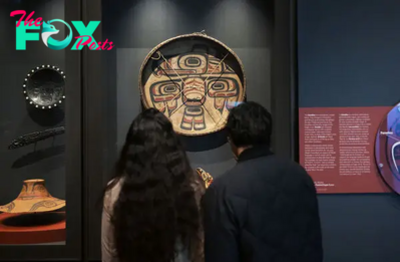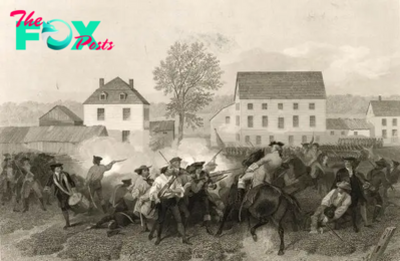History
What New York’s First Migrant Crisis Can Teach Us About Immigration Today
New York City, according to some of its leaders, is being “overwhelmed” as never before by migrants. Their sheer numbers, and the costs of housing and feeding them, has triggered an unprecedented crisis. Everywhere one looks, it seems, “lazy” newcomers congregate on street corners, in parks, and in front of shelters. They appear to have “no plan, and no energy to form one.” Rather than support themselves, they beg or steal or seek charity and government handouts. Many say that the New York they know and love will be “destroyed” unless the border is somehow sealed or the migrants can be sent elsewhere.
New York in 2024? No, this was New York in 1854, after hundreds of thousands of refugees from Ireland’s Great Famine flooded into New York City. In 1845, when a Mysterious blight first began decimating Ireland’s potato crop, New York City (then just Manhattan Island) had a population of 350,000. Over the ensuing decade, a million refugees fleeing the Irish Famine landed in lower Manhattan, disembarking half-starved from sailing ships that took 35 days to cross the Atlantic. Not all of these migrants settled permanently in New York, but about half of them did, at least for a while. As a result, in 10 years, New York’s population nearly doubled. While today’s “migrants” make up no more than 2% of the city’s population, in 1855 one out of every four New Yorkers was an Irish Famine refugee.
Ireland’s Great Famine precipitated the United States’ original migrant crisis. Yet even though the scale of that crisis dwarfed this one, New York managed it successfully. How we handled the migrant crisis of 1854 can teach us a lot about how to navigate our way through the migrant surge of 2024.
First, don’t believe the doomsday predictions. Every major wave of newcomers has precipitated some degree of panic from native-born Americans. Yet the U.S. has always managed to absorb each new group and benefit from their presence. The Irish, it was said, would ruin America because it was impossible to be both a Catholic and a patriotic American. Catholics had to follow the orders of their priests (and ultimately the Pope), contended Protestants, and therefore did not have the freedom of thought necessary to vote wisely to protect and perPetuate a democracy. Furthermore, all the rich nations of the world were Protestant, these Americans insisted. “Lazy” Irishmen accustomed to poverty would surely impoverish the U.S. as well. Yet neither these dire predictions, nor the many others made about the Famine Irish, came to pass. Instead, the Irish thrived. Many climbed quickly up the socioeconomic ladder, while others provided the manual labor that allowed the U.S. to become an economic dynamo.
Read More: The Current Migrant Crisis Is a Collective Trauma
Second, don’t be duped by the fallacy that today’s migrants aren’t “waiting in line” to get a visa to immigrate to the U.S. like previous generations did. In truth, very few native-born Americans today have ancestors who waited in such a line. There was none for the Famine Irish. They simply bought ship tickets and sailed to America. They did not need pasSports or visas or any form of identification or anyone’s permission to come here. When their ships landed in New York, they just walked down the gangplanks and began their new lives in America—no government official inspected or questioned them or even recorded their arrival (the ship manifests one can find online these days were compiled by the shipping lines, not the government). Only beginning in the 1920s, when Congress reduced immigration to a trickle, did the U.S. require immigrants to obtain prior permission to settle in America. Unless your forebearers are Asian or Latino, your immigrant ancestors probably did not “wait their turn” to come to U.S.
Third, it is important not to interfere with the migrants’ desire to cultivate and foster their own self-help networks. Americans might think that newcomers haphazardly decide where to settle and what jobs to take, but nothing could be further from the truth. In the case of the Irish in the 1850s, those from one part of County Donegal immigrated to New York, but folks from other parts of Donegal settled overwhelmingly in the eastern Pennsylvania coal mining region. In each American locale, the newcomers’ friends and families housed the new arrivals and found them jobs. Yet today’s policies inhibit such self-help networks. When Governors Greg Abbott and Ron DeSantis randomly bus migrants all across the nation, it prevents the newcomers from joining the very compatriots who will enable them to quickly become self-sufficient.
Finally, we need to let the migrants work. Tens of thousands of Irish Famine migrants initially became dependent on charities and the government for food and shelter. Yet the Irish migrants quickly became self-supporting because, like all immigrant groups before and since, they worked incredibly hard. The Famine immigrants commonly worked multiple shifts or multiple jobs to support starving family members who remained in Ireland and to save money to start their own Businesses. Today’s migrants can’t follow this tradition (and pay the taxes such work would generate) because American asylum law now bans them from working in the U.S. during their first 180 days in America. Only at that point can they apply for permission to work, which can take months longer to be granted (though migrants from a few countries, such as Cuba, receive expedited work permits). The sooner we let today’s migrants work, the sooner they will cease to be a burden on public resources and start to become the solution to the labor shortages plaguing so many parts of the U.S.
“By all obvious reasoning the advent of the Irish should have been a failure,” commented a New Orleans newspaper, the City Item, a quarter century after the Irish migrant crisis had subsided. Not only were the Irish “not welcomed,” the paper recounted, they were “reviled.” Yet “step by step, they advanced,” until a generation later the Irish had achieved “miraculous” economic prosperity. Every subsequent generation of immigrants has done the same, and there is no reason to believe that today’s migrants will be any different. It took longer than a generation for the Irish to gain social acceptance, and that will be a lengthy process for today’s migrants too. But if we use America’s first refugee crisis as a guide, today’s migrants can become just as much a boon to the U.S. as were the Irish—if we let them.
-

 History1w ago
History1w agoHow Ronald Reagan Helped Abortion Take Over the Republican Agenda
-

 History1w ago
History1w agoBeyoncé Backlash Is Part of a Century of Cowboy Gatekeeping
-

 History1w ago
History1w agoBe Careful With ‘Nutrition Facts’ as a Model for Tech Transparency
-

 History1w ago
History1w agoHow the Democrats Became the Party of Economics
-

 History2w ago
History2w agoWhy Indigenous Artifacts Should Be Returned to Indigenous Communities
-

 History2w ago
History2w agoWhat AMLO Could Learn From the 19th Century Mexican Journalist He Idealizes
-

 History2w ago
History2w agoA 1920s Lesson for Today’s History Textbook Wars
-

 History2w ago
History2w agoTexas Is Trying to Upend Who Controls U.S. Immigration Policy



























